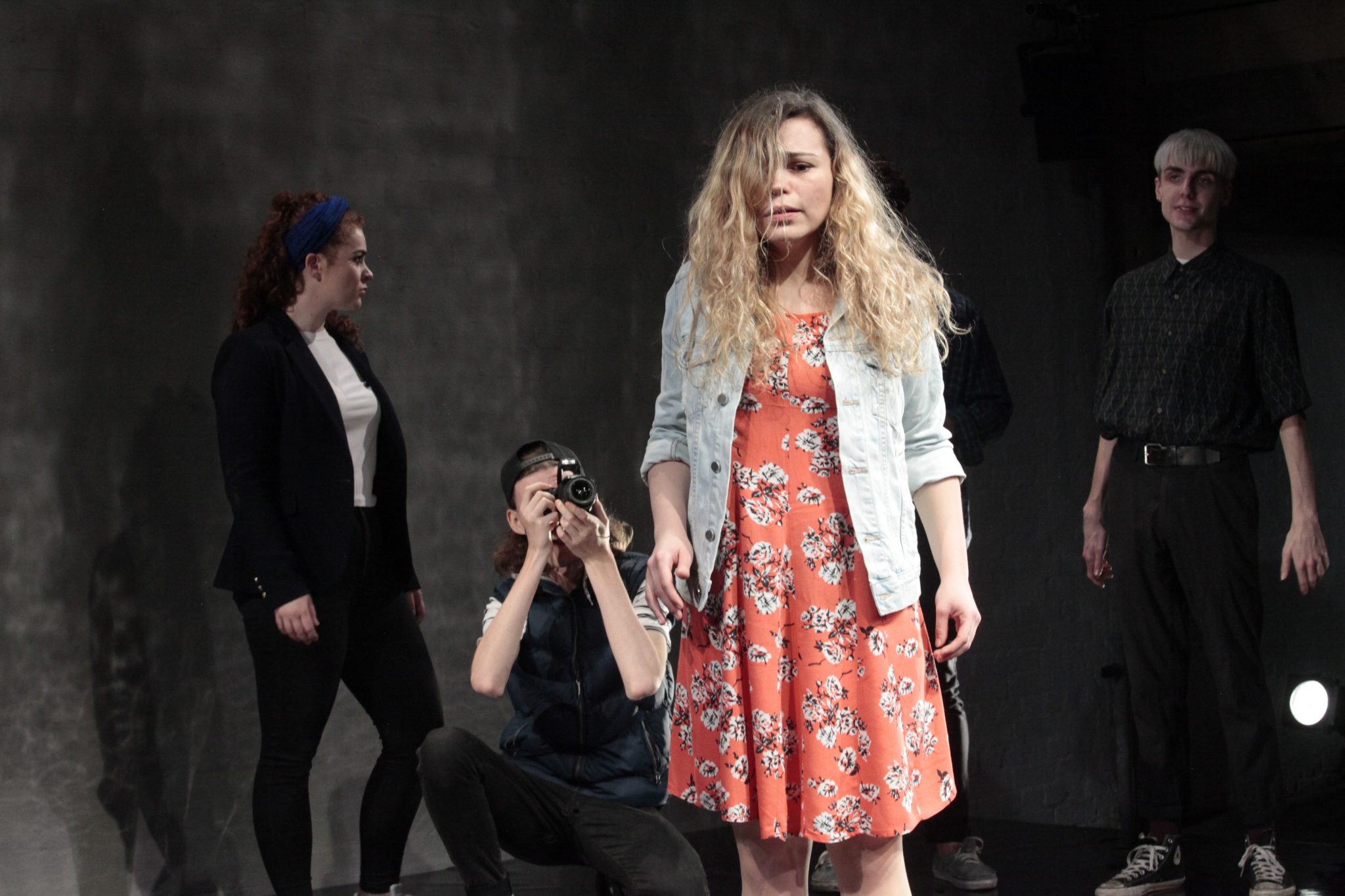When first hearing the title Cacophony, ideas of chaos may come to mind. Meaning a jarring mix of sounds, the word cacophony suggests disruption, discord – it feels overwhelming negative. It may be surprising to hear, therefore, that for the most part, Cacophony is a play that encourages an affirming, positive way of making noise – through protest. Drawing our attention to Abbie, a young woman who spoke out after a friend was severely injured during a feminist protest, the drama follows an individual who will no longer allow herself or other women to be left unheard. So, why choose the title Cacophony? Unbeknownst to us, we already have the answer to that question – perhaps in a jacket pocket or bag – for now, left on silent.
Molly Taylor‘s play is a powerful and provocative piece of theatre performed by the Almeida Young Company. Cacophony explores the impact social media and the internet have on people’s lives in the twenty-first century; how it can dictate whether someone is a friend or foe. As Abbie begins to amass more attention on social media, with her rising fame comes questions of gender equality, accountability and white privilege.
The play begins with Abbie’s best friend, Tash, asking when things began to first change for her now-absent friend. Tracking Abbie’s journey from university student to women’s rights advocate, her friends try to work out where it all went wrong. From the outset, we are made aware of the impressively large cast involved in the production, who come and go whenever they appear in Abbie’s narrative. In spite of the group’s size, there is fluidity throughout the performance, with smooth scene changes and naturalistic exchanges between the characters. Each of the actors makes the most of their time onstage, offering their perspective of Abbie’s experience. There is a great mix of personalities portrayed onstage, all of them familiar figures from your time at school and/or university. The strength of this company – in terms of both the performers and production team – is evident in the club scene early on in the play. The brilliant mix of sound, lighting and choreography makes you want to join them onstage.
In the middle of all this action, of course, is Abbie – played here by Annie Hawkins. This young woman – who bears a striking resemblance to Billie Piper – does well to leave us wondering who she really is; you find yourself wondering whether Abbie’s intentions are genuine or all an act. Even as you begin to question her, you cannot help but root for her when she comes across Piers Morgan types and other figures who wish to suppress her and undermine her activism as a woman.
One way such criticism arises, of course, is social media. Technology is constantly present throughout the piece, whether it is a phone in someone’s hand or a laptop onstage. It is used incredibly effectively, particularly in scenes where the whole cast are involved. The influence of social media is always on the audience’s mind; on occasion we hear the cast list off various tweets about Abbie, especially as her public persona begins to rise out of her reach. Equally, we see how quickly people can turn, and how the noise of Twitter and other social media outlets can become an unbearable cacophony of insults, threats and hate. Using the large cast to great effect, we see Abbie literally become surrounded by these vile voices online.
How we get to this point is answer only those who are lucky to see the show will discover. There are a number of unexpected curve-balls expertly thrown your way, each of them leaving you questioning what (and who) you think you know. Even though we may not get all the answers we hope for by the end, one thing is certain: this run of Cacophony was far too short.
